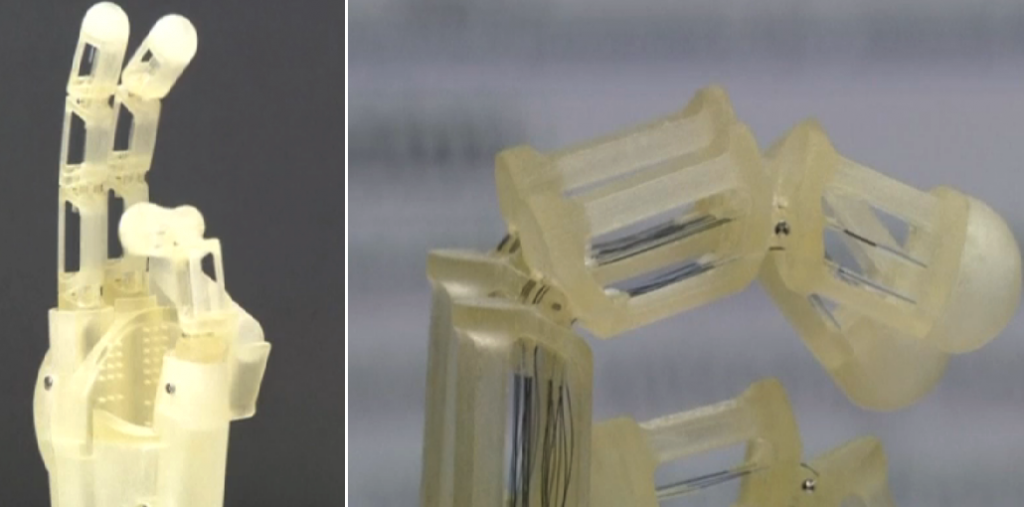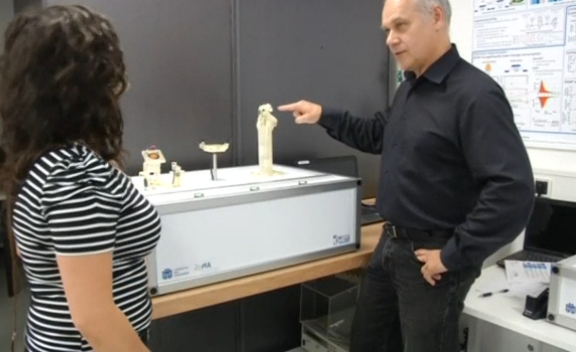 The use of–and the art of developing–prosthetics has a history nearly as old as humanity itself. Obviously, if you’ve never lost a limb or experienced the challenge of trying to work with only one hand, for example, it’s nearly impossible to understand. There are inspired individuals in the making and scientific community, some who have lost limbs and some who have not, who are on a mission to make the prosthetic as real, and as functional, as possible. And while that has always most certainly been the case, today we possess the tools to nearly give back what many are missing–or lost.
The use of–and the art of developing–prosthetics has a history nearly as old as humanity itself. Obviously, if you’ve never lost a limb or experienced the challenge of trying to work with only one hand, for example, it’s nearly impossible to understand. There are inspired individuals in the making and scientific community, some who have lost limbs and some who have not, who are on a mission to make the prosthetic as real, and as functional, as possible. And while that has always most certainly been the case, today we possess the tools to nearly give back what many are missing–or lost.
 Not just the case with prosthetics, digital design and 3D printing are opening up many new avenues and showing thousands of patients options and inspiration they did not see as a reality. This is certainly the case–and lucky will be the recipient of the latest 3D printed prosthetic developed by a research team at Saarland University.
Not just the case with prosthetics, digital design and 3D printing are opening up many new avenues and showing thousands of patients options and inspiration they did not see as a reality. This is certainly the case–and lucky will be the recipient of the latest 3D printed prosthetic developed by a research team at Saarland University.
The first ‘smart hand’ has come into being, employing muscles composed of wires powered by electric charges that cause them to move, tensing and relaxing, and allowing the user to perform manual tasks.
Creating the ultimate in biomimicry, researchers are able to present not only a realistic look, but also true function due to the fibers entwined within the prosthetic. Able to perform quite impressively, the 3D printed devices are deemed powerful by the use of nickel-titanium wire which is extremely dense. Movement is even completely possible in more restricted spaces.
Entering into what many consider to be the next dimension of 3D printing, materials like this 3D printed smart hand are able to perform a function and then revert back to their original shape. Shape memory in the case of the 3D printed bionic hand means that it is charged by the electricity and comes to life in a lattice shape as it contracts and offers mobility to the user, all controlled by a single semiconductor chip.
“This enables us to build particularly lightweight systems, and the fact that they come in the form of wires enables us to use them as artificial muscles, or artificial tendons,” explained Professor Stefan Seelecke from Saarland University and at the Center for Mechatronics and Automation (ZeMA). “So we can build systems with those that can be like bio-inspired, look-to-nature for a successful prototype, and that’s what we realized with this first prototype of a robotic hand using shape-memory alloy wires.”
The bundling of wires is key to the success of this prototype, which was initially demonstrated through the rudimentary example of a bat beating its wings, using only two wires. For the hand design, researchers copied from life–and true human anatomy–to achieve the desired result. Groups of the wires, bundled, are able to imitate real muscles due to contractions caused by heat.
“The movement of the hand is done by the wire. This wire, when activated, they contract. And we are able to exploit this contraction to make the finger move. And we can move each phalanx independently,” explained Engineer Filomena Simone, a PhD student and co-developer of the 3D printed bionics.
 Without having to use any other sensors due to the performance of the semiconductor chip, they are able to control and regulate motion without having to add weight to the bionics, which is what makes a difference in the design of the hand. Obviously, if researchers can 3D print a hand with smart capabilities, it would make sense that these innovations could expand to the rest of the body.
Without having to use any other sensors due to the performance of the semiconductor chip, they are able to control and regulate motion without having to add weight to the bionics, which is what makes a difference in the design of the hand. Obviously, if researchers can 3D print a hand with smart capabilities, it would make sense that these innovations could expand to the rest of the body.
“I think if you look down the road to future prostheses generations, you’d like to see this integrated with the human body in a way that you can actually sense the nerve stimuli and then can feed that into a micro-controller which there will be translated to a corresponding signal to activate the muscle,” said Seelecke. “So, eventually you need to couple nerves with proper electrodes and combine that with the actuation of the muscles so you can create some integrated, biologically inspired actuation system for prostheses.”
How do you think 3D printing and bionics will change the future of medicine–and the lives of those in need of prosthetics? Discuss in the 3D Printed Smart Hands forum over at 3DPB.com.
Subscribe to Our Email Newsletter
Stay up-to-date on all the latest news from the 3D printing industry and receive information and offers from third party vendors.
You May Also Like
Precision at the Microscale: UK Researchers Advance Medical Devices with BMF’s 3D Printing Tech
University of Nottingham researchers are using Boston Micro Fabrication‘s (BMF) 3D printing technology to develop medical devices that improve compatibility with human tissue. Funded by a UK grant, this project...
3D Printing Webinar and Event Roundup: April 21, 2024
It’s another busy week of webinars and events, starting with Hannover Messe in Germany and continuing with Metalcasting Congress, Chinaplas, TechBlick’s Innovation Festival, and more. Stratasys continues its advanced training...
3D Printing Webinar and Event Roundup: March 17, 2024
It’s another busy week of webinars and events, including SALMED 2024 and AM Forum in Berlin. Stratasys continues its in-person training and is offering two webinars, ASTM is holding a...
3D Printed Micro Antenna is 15% Smaller and 6X Lighter
Horizon Microtechnologies has achieved success in creating a high-frequency D-Band horn antenna through micro 3D printing. However, this achievement did not rely solely on 3D printing; it involved a combination...






























